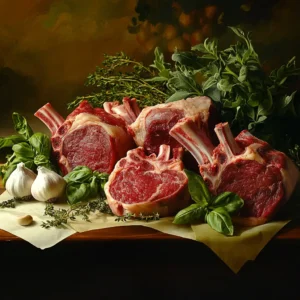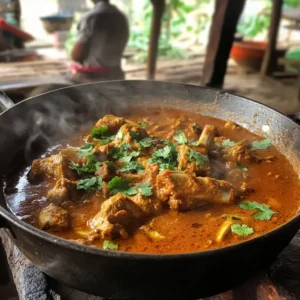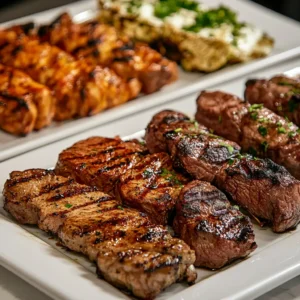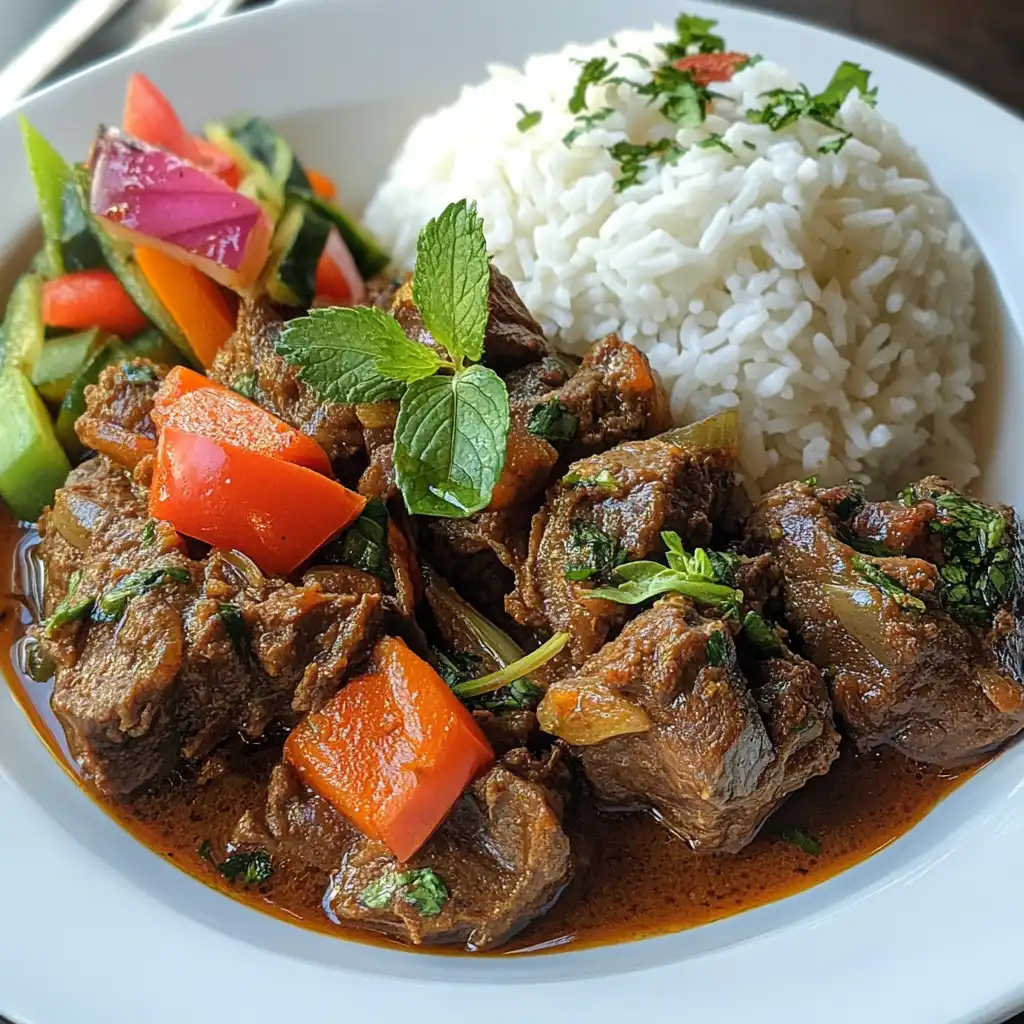Introduction
Goat meat, a staple in many global cuisines, is becoming increasingly popular in Western countries as people explore new culinary experiences. But what does goat taste like? Known for its rich, slightly gamey flavor, goat meat offers a unique taste that sets it apart from other proteins like beef, chicken, or lamb.
As one of the most widely consumed meats worldwide, goat is a dietary mainstay in Africa, Asia, the Middle East, and the Caribbean. Its versatility in recipes—from spicy curries to grilled kabobs—makes it a favorite for both traditional and modern dishes. Yet, for those unfamiliar with it, understanding goat meat’s flavor profile can make it easier to appreciate and incorporate into meals.
This article dives into the taste and texture of goat meat, how cooking methods influence its flavor, and how it compares to other meats. By the end, you’ll know exactly what to expect when enjoying this globally celebrated protein.
The Unique Flavor of Goat Meat
Goat meat has a distinct taste that makes it stand out among other proteins. Its flavor is often described as rich, earthy, and slightly gamey, with a subtle sweetness that balances its boldness. However, the exact taste can vary depending on factors such as the goat’s age, diet, and how it’s prepared.

How Goat Meat’s Flavor Compares to Other Meats
- Milder than Lamb: Goat meat shares some similarities with lamb, but it is generally less fatty, making its flavor cleaner and less intense.
- Richer than Chicken: Compared to chicken, goat meat has a deeper, more robust flavor. It pairs exceptionally well with bold spices and marinades.
- Leaner than Beef: Goat meat’s lower fat content gives it a leaner taste compared to beef, but its earthy undertones make it equally satisfying in hearty dishes.
Factors That Influence the Taste
The flavor of goat meat is not uniform and depends on several factors:
- Age of the Goat:
- Younger Goats (Cabrito/Capretto): The meat is tender and mild, with a delicate flavor.
- Older Goats (Chevon): The meat develops a richer, gamier taste, perfect for slow-cooked dishes.
- Diet and Environment:
- Goats raised on grass or natural vegetation tend to have a more herbaceous flavor.
- Grain-fed goats may have a slightly milder and sweeter taste.
- Preparation and Cooking:
- Marinating goat meat with spices and acidic ingredients can mellow its gamey notes while enhancing its natural richness.
- Cooking methods, such as grilling, roasting, or stewing, can also significantly alter the flavor profile.
The Texture of Goat Meat
Goat meat is renowned for its versatility in texture, which ranges from tender to firm depending on the cut and the goat’s age. Understanding its texture can help you choose the right preparation method and fully enjoy its culinary potential.
Tender Cuts and Their Uses
The most tender cuts of goat meat come from younger animals, such as cabrito or capretto, which are slaughtered at a young age. These cuts include:
- Loin: Ideal for quick grilling or roasting, as it cooks evenly and retains moisture.
- Rib Chops: Best when marinated and grilled, offering a juicy and flavorful result.
- Shoulder (from young goats): Suitable for slow cooking but also tender enough for braising or roasting.
Tender cuts are often mild in flavor and work well in dishes that highlight their delicate texture, such as grilled kabobs or roasted goat recipes.
Firmer Cuts and Slow-Cooking Methods
Firmer cuts come from older goats or less tender parts of the animal. These cuts require longer cooking times to break down connective tissue and achieve a tender, succulent texture:
- Leg: Excellent for stewing, braising, or roasting at low temperatures over an extended period.
- Shank: A tougher cut that shines in slow-cooked dishes like curries or hearty stews.
- Neck and Shoulder (from mature goats): Perfect for slow cooking, allowing the meat to absorb the flavors of spices and seasonings.
When cooked correctly, these firmer cuts develop a melt-in-your-mouth texture that complements their robust flavor.
Comparing Texture to Other Meats
- More Firm Than Chicken: Goat meat tends to have a firmer texture than chicken, requiring longer cooking times for certain cuts.
- Leaner Than Lamb: Goat is leaner and less fatty than lamb, giving it a denser texture that pairs well with slow-cooking methods.
- Comparable to Beef in Versatility: Like beef, goat offers a range of textures depending on the cut, making it suitable for grilling, roasting, or stewing.
Cooking Methods and Their Impact on Taste
The way you cook goat meat significantly influences its flavor and texture. Different methods bring out unique qualities, from enhancing its natural richness to softening tougher cuts. Choosing the right cooking technique is key to fully appreciating goat meat’s versatility.

Grilling and Roasting for Bold Flavors
Grilling and roasting are excellent for tender cuts like loin, ribs, or young goat meat (cabrito):
- Grilling: High-heat grilling caramelizes the surface of the meat, creating a smoky, savory flavor. Marinating with herbs, garlic, and lemon juice enhances its taste.
- Roasting: Roasting goat meat in the oven, especially with a blend of spices and olive oil, delivers a succulent, flavorful result. This method is perfect for whole leg roasts or rib racks.
These methods work best for showcasing goat meat’s natural flavors with minimal effort.
Slow Cooking for Deep, Rich Tastes
Tougher cuts like shank, neck, and shoulder benefit most from slow-cooking methods:
- Braising: Cooking goat meat in liquid, such as broth or wine, softens the fibers and allows the meat to absorb the flavors of the cooking liquid.
- Stewing: Ideal for curries and soups, stewing transforms firmer cuts into tender, melt-in-your-mouth morsels. Bold spices like cumin, turmeric, and paprika complement the rich flavors.
- Pressure Cooking: Modern pressure cookers reduce cooking time while retaining the depth of flavor typically achieved through slow cooking.
Slow cooking enhances goat meat’s gamier notes, making it an excellent option for flavorful, hearty meals.
Using Spices and Marinades to Enhance Flavor
Spices and marinades play a crucial role in balancing goat meat’s natural richness and gamey notes:
- Popular Spices: Garlic, ginger, cumin, coriander, turmeric, and paprika work exceptionally well with goat meat.
- Marinades: Acidic ingredients like yogurt, vinegar, or lemon juice help tenderize the meat while adding tangy depth to the flavor.
- Herbs: Fresh rosemary, thyme, or cilantro add aromatic accents that elevate the dish.
A well-prepared marinade can transform even the simplest goat meat recipe into a complex and satisfying dish.
Comparisons with Other Meats
To understand goat meat’s flavor and texture better, it’s helpful to compare it to other popular proteins like lamb, beef, and chicken. These comparisons highlight what makes goat meat unique and why it’s a standout choice for many dishes.

Lamb
- Flavor: Goat meat is less fatty than lamb, giving it a milder, cleaner taste. Lamb tends to have a stronger, gamier flavor due to its higher fat content.
- Texture: Goat meat is leaner and denser, while lamb has a softer texture thanks to its intramuscular fat.
- Culinary Uses: Goat meat pairs well with bold spices and slow-cooked dishes like curries and stews, while lamb is often grilled or roasted.
Beef
- Flavor: Goat meat has an earthy, slightly gamey flavor compared to beef’s richer, heavier taste. Its lean profile makes it feel lighter on the palate.
- Texture: Goat meat is firmer than beef due to its lower fat content, which makes it ideal for slow-cooking methods.
- Culinary Uses: Goat meat excels in spiced dishes like biryanis or barbecues, while beef is a staple for grilling and steaks.
Chicken
- Flavor: Goat meat has a much bolder, richer flavor than chicken’s mild and neutral taste. It shines in dishes that require strong seasoning.
- Texture: Goat meat is denser and firmer, making it ideal for slow-cooked recipes, whereas chicken cooks quickly and has a tender texture.
- Culinary Uses: Goat meat is perfect for curries, stews, and roasts, while chicken adapts well to lighter recipes like salads or stir-fries.
Why Choose Goat Meat?
Goat meat’s unique combination of lean texture and robust flavor sets it apart. Its versatility makes it a great alternative for those looking to expand their palate or try something different from traditional meats like lamb or beef.
Cultural Contexts of Goat Meat’s Taste
The taste of goat meat is deeply rooted in the culinary traditions of many cultures around the world. Its distinct flavor and adaptability make it a cornerstone in a variety of regional cuisines, often paired with bold spices and rich seasonings to enhance its natural taste.
Goat Meat in African Cuisine
In Africa, goat meat is a staple protein and plays a central role in traditional meals:
- Preparation Methods: It is commonly grilled, roasted, or slow-cooked in stews. Spices like ginger, garlic, and chili add depth to the flavor.
- Signature Dishes: Popular dishes include Nigerian goat pepper soup and South African braais (barbecues), which highlight the meat’s bold taste.
- Cultural Significance: Goat meat is often served during celebrations and ceremonies, symbolizing abundance and hospitality.
Goat Meat in Asian Cuisine
Asian cuisines embrace goat meat for its ability to absorb spices and adapt to various cooking styles:
- South Asia: In countries like India and Pakistan, goat meat is the primary ingredient in dishes like biryani, curry, and kebabs. It is often referred to as “mutton” in these regions.
- East Asia: In Indonesia, goat meat is grilled as satay kambing or simmered in rich soups.
- Middle East: Roasted goat (mishwi) and goat-based stews feature prominently in Middle Eastern feasts, where the meat is marinated with warm spices like cinnamon, cumin, and cardamom.
Goat Meat in Caribbean Cuisine
The Caribbean is known for its bold flavors, and goat meat is no exception:
- Signature Dish: Curry goat is a beloved staple, often prepared with Scotch bonnet peppers, thyme, and allspice for a fiery yet savory profile.
- Cooking Techniques: Goat meat is typically slow-cooked to achieve a tender texture that absorbs the vibrant seasonings.
- Cultural Role: It is a central part of festive meals, especially during holidays and special occasions.
Traditional Recipes Showcasing Goat Meat Flavors
Goat meat’s versatility is evident in the diverse traditional recipes that highlight its taste:
- African Goat Stew: A rich, hearty dish made with tomatoes, onions, and bold spices.
- Indian Mutton Curry: Slow-cooked goat meat in a thick, spiced gravy served with rice or naan.
- Jamaican Curry Goat: A Caribbean favorite, featuring tender goat meat simmered with curry powder, allspice, and hot peppers.
- Middle Eastern Kabobs: Marinated goat meat grilled on skewers and served with flatbread or rice.

